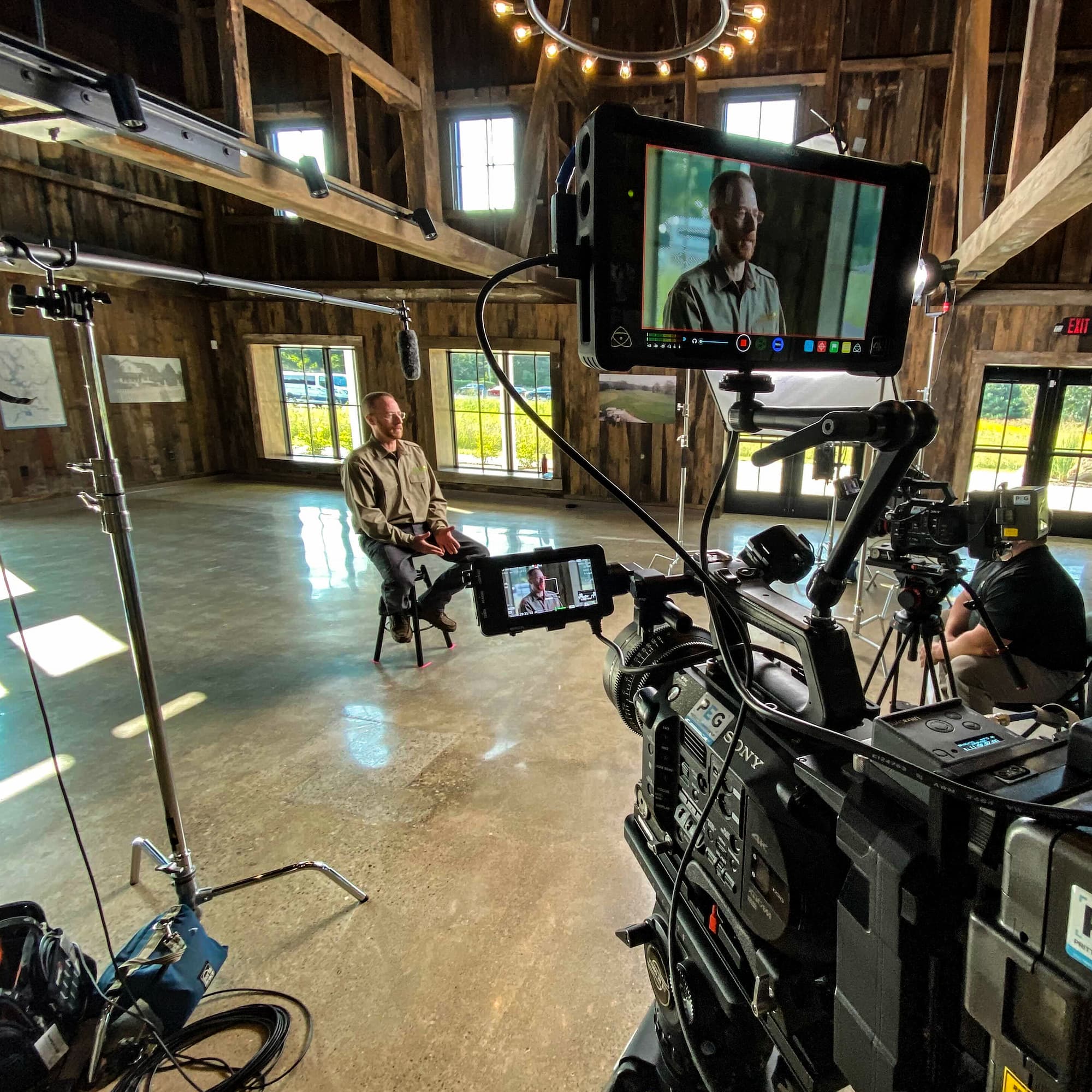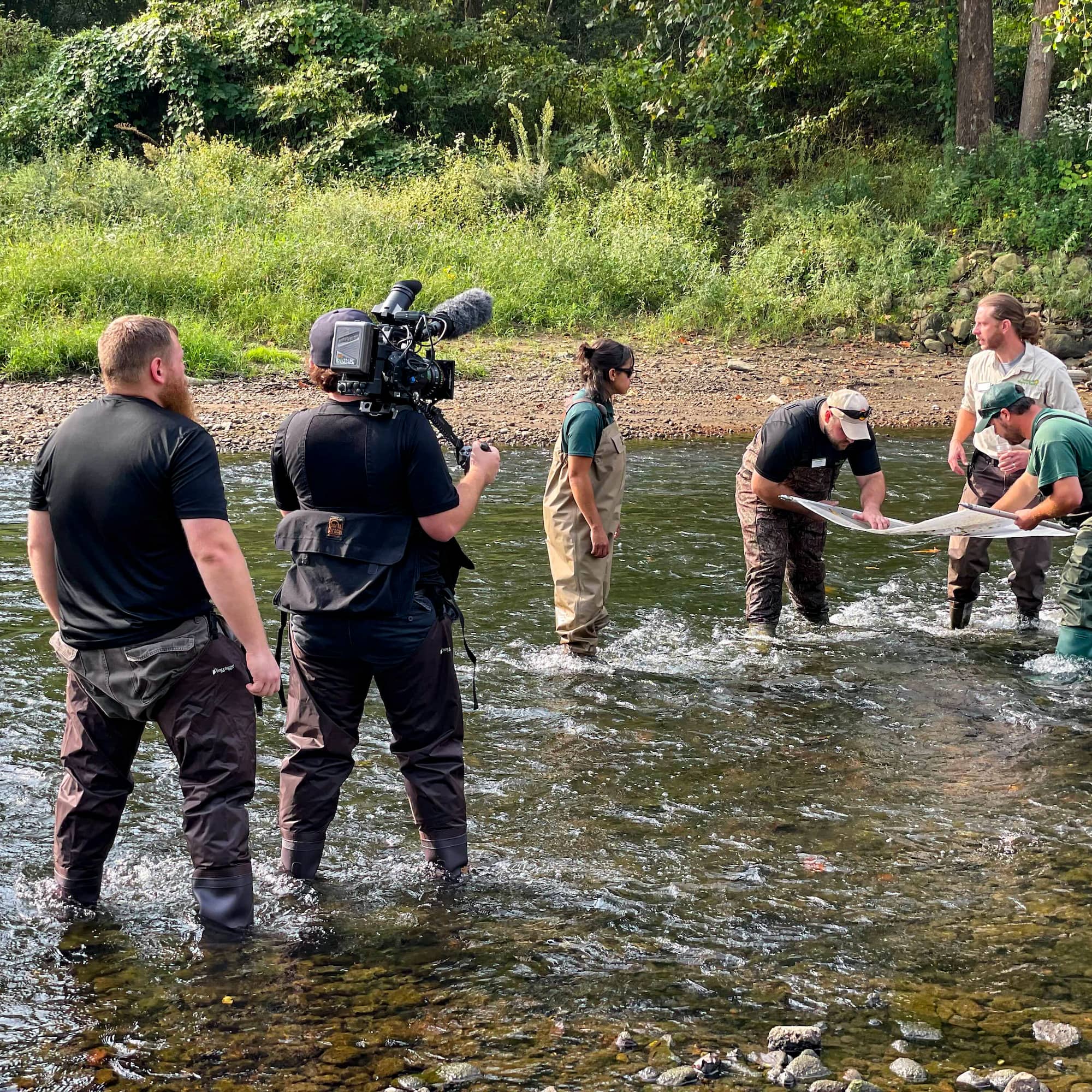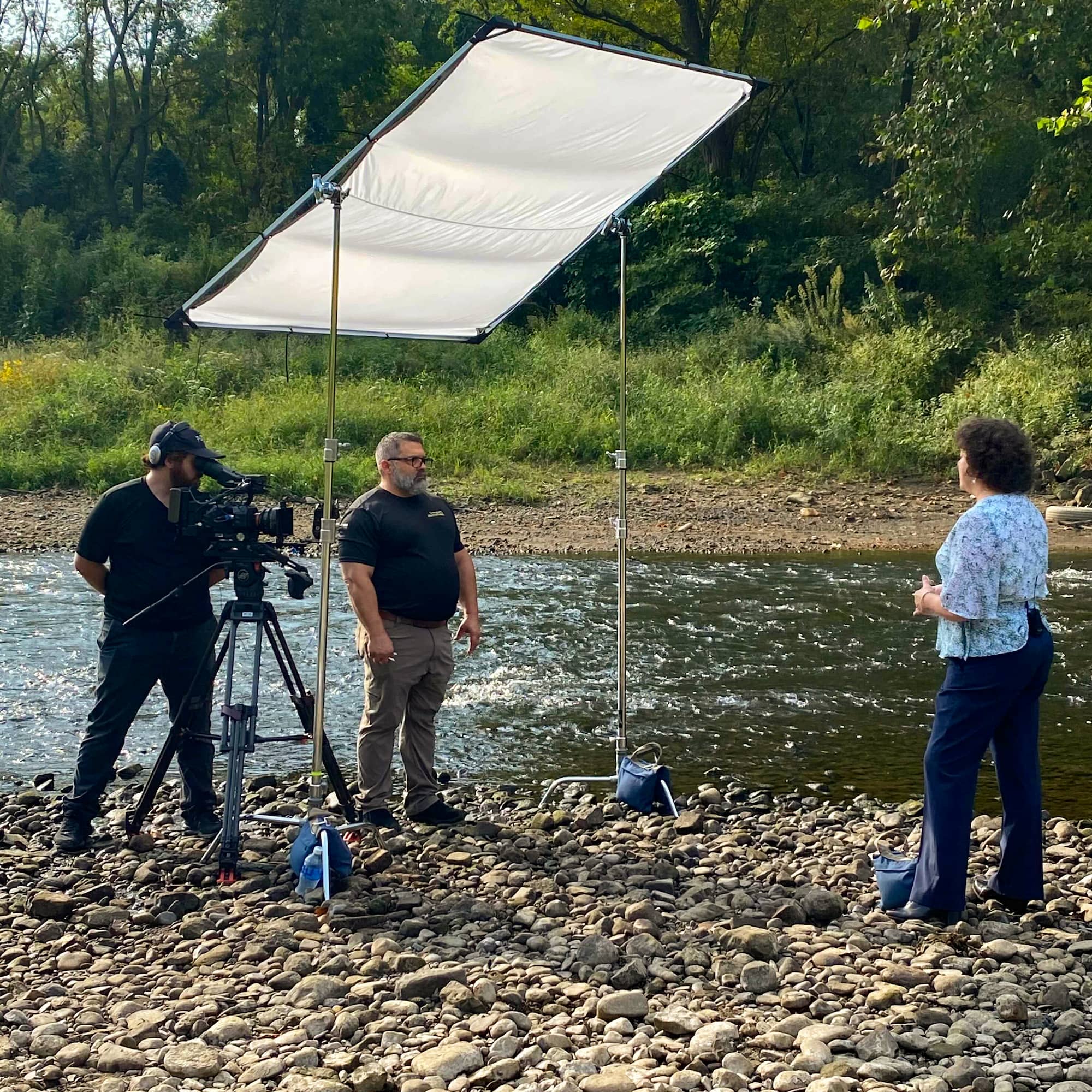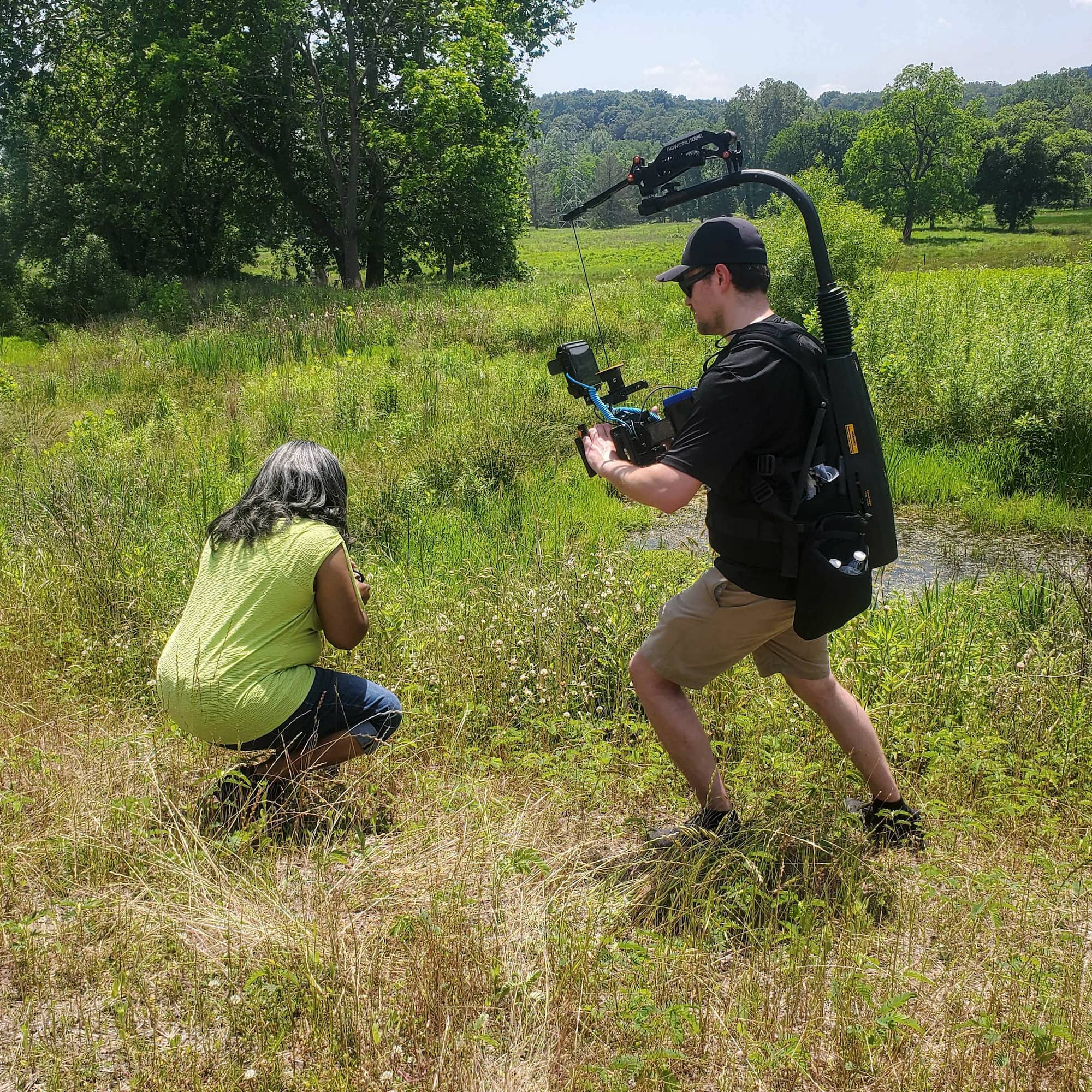Valley View: Restoring the Missing Link
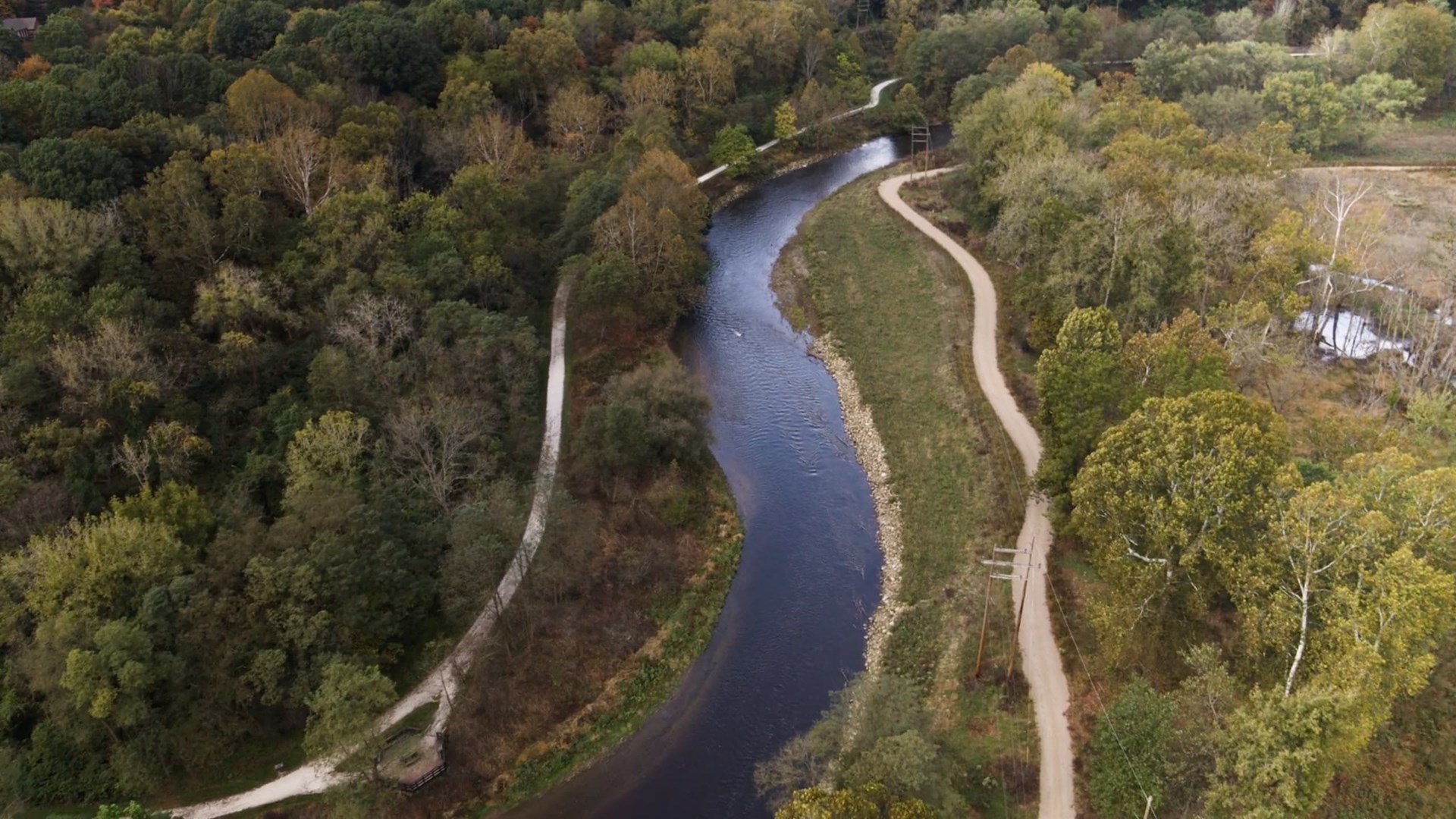
Objectives/Requirements
Objectives
- Create a documentary that showcased and explained the transformation of Valley View from a golf course to a Metro Park for the general public.
- Demonstrate to key funding organizations that the change from golf course back to natural aquifer increased overall quality for water draining directly into Lake Erie.
Requirements
- Develop a strong narrative for the piece that included all the stakeholders involved in the project including funders, conservationists and contractors.
- Create a full, long-form version of the piece as well as a shorter version for social media applications.
- Continuously collect footage and other assets over the extended timeline of the Valley View project, including sourcing historic assets needed to tell the story.
Discovery/Concepting
While initial calls and introductions for the project were done via Zoom, our team was eager to get out into the park itself and see the work being done in-person. We got a first-hand look at the progress during a tour of Valley View with our main contacts throughout the process - Summit Metro Parks Brand Manager, Lindsay Smith, and Chief of Conservation, Mike Johnson.
During this tour we learned a lot about the history of the park and the problems that the golf course infrastructure had caused to the wildlife and ecosystem in the area. It was clear that the Summit Metro Parks team was passionate about this area and its revitalization. And we were excited to get started and help them share their work with a larger audience.
A Documentary Concept
We knew from the start that it was going to be a documentary-style piece. It would rely heavily on the stakeholders and subject-matter experts being interviewed on camera to explain the process and drive the narrative. Our team went in-depth with research and worked with the Summit Metro Parks team to become knowledgeable about the different topics being covered so that we could ask the proper questions and tell the right story.
Two versions of the piece were concepted for creation from the start. The first video would be a long-form documentary that would be a deep-dive into the entire history of the area and the long transformation process that took place. The second version would contain similar content, but would be shortened into a social media-friendly piece that could be used more broadly on a variety of platforms.
Planning and Coordination
Knowing that this documentary piece would rely heavily on interviews, the first step was making sure that we worked with Summit Metro Parks to identify who needed to be on camera and when they were available to film. It was decided that the inside of the recently-restored Valley View barn was the perfect location to host many of the interviews, and also showcase the beautiful new space.
Our team’s Account Manager worked with 12 interviewees to coordinate and schedule shooting times over two and a half days that worked for everyone.
We also had to capture significant b-roll footage of the park over the course of the project. This required its own coordination to make sure we were able to be on-site for some key moments in the restoration process.
Shoots
The shoots took place over the course of almost a year and involved interviews, on-the-ground b-roll and drone shoots. All of the different types of shots, along with provided imagery, gave the final piece a variety of unique and interesting footage.
Interview Shoots
Since most of the interviews took place in one location, our team was able to use the same lighting and gear setup for each. Our team for shoot days included a Director, two Camera Operators and an Audio Technician, with Mike from the Summit Metro Parks team leading the questions.
We used our two Sony FS7s for both interview angles, with our Aputure 600D and 300D as the main lighting for the scene. It was important for our team to be cognizant of time and stay on schedule throughout the day. With a number of interviews each day, interviewees were scheduled in back-to-back 30-minute time slots.
B-Roll Shoots
There were several b-roll shoot days spread throughout approximately 12 months of filming. Each of these days looked slightly different based on what specifically was being filmed that day. The majority of b-roll captured on the ground was filmed on our Sony A7 camera, and supported by high-end motion equipment like our DJI Ronin 2. The FS7 was used shoulder-mounted in certain instances where the team had to be in the water or other rougher terrain.
Drone shoots were used to help capture b-roll and beauty imagery. These aerial shots helped portray the scope of work that was being done to the area and gave the viewer the opportunity to see and experience Valley View from a whole new perspective.
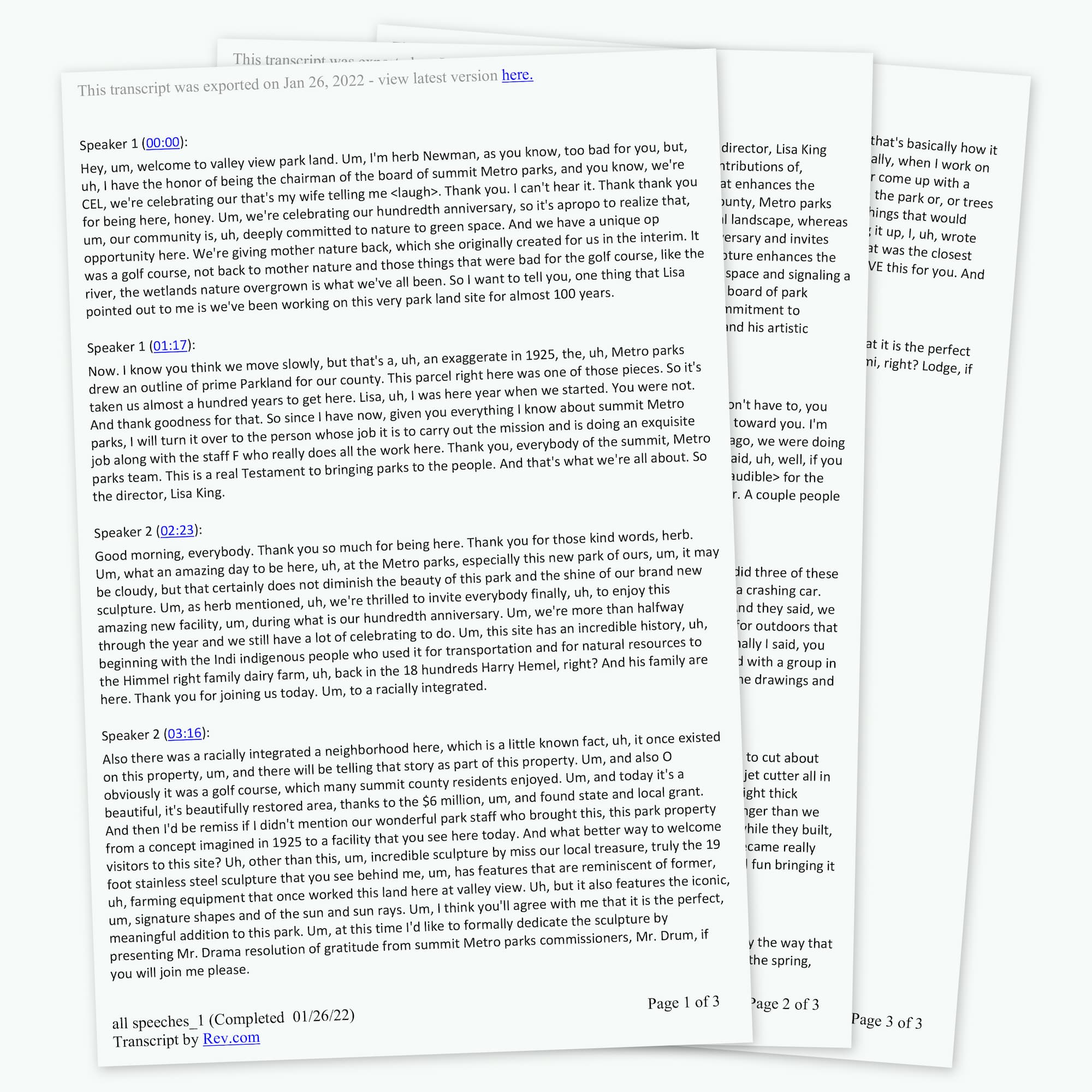
Creation
Starting off the edit process, it was important to go through all the assets and have everything organized and ready. Not only did we have large amounts of footage from our own shoots, but we also had historical photos and other items that were provided by Summit Metro Parks.
Scripting and Voice Over
Since the narrative was being told primarily through the interviews, it was important to know what was said by each individual. Our team used transcriptions that were created from the complete interview to quickly review answers and begin putting the story together. This allowed a lot of prep work to be done before the actual video editing process even got started.
Our main contact and Chief of Conservation for the parks, Mike Johnson, was chosen as the perfect voice to tell the Valley View project story. With a narrative crafted and ready to go, we used our own studio to record the final voiceover.
In-Person Edits
Once an initial draft was put together and reviewed, the client came into the office to utilize our editing suite to sit with the editor. This face-to-face editing time allowed the client to clarify some of their notes and walk through assets with the editor. As the experts on highly-specialized subjects, like fish species and other wildlife identification, it was helpful to have them on-site to help select the best imagery for each section of the documentary.
The Short-Form Version
After we had an approved long-form documentary, it was time to make the short-form version for social media. Our team was challenged to take the almost 20-minute story down to under five minutes, while still keeping the messaging and important information intact. In the end, we worked with the Summit Metro Parks team to consolidate the talking points into a punchy, information-filled, short-form doc that still gave audiences a thorough look at the Valley View project.
Results
The Summit Metro Parks team was thrilled with both versions of the Valley View: Restoring the Missing Link documentary. The long-form version was uploaded to YouTube and is one of their top viewed videos.
This project provided a unique opportunity to capture and tell a documentary-style before-and-after piece. It brought together beautiful nature footage, insightful expert interviews and archival assets to tell a complete and compelling story that everyone was incredibly proud of. It truly captured the amount of work put in by all partners involved to make the project a success.
In April of 2023, Valley View: Restoring the Missing Link was nominated for a regional Emmy Award in the category of Documentary Topical.

